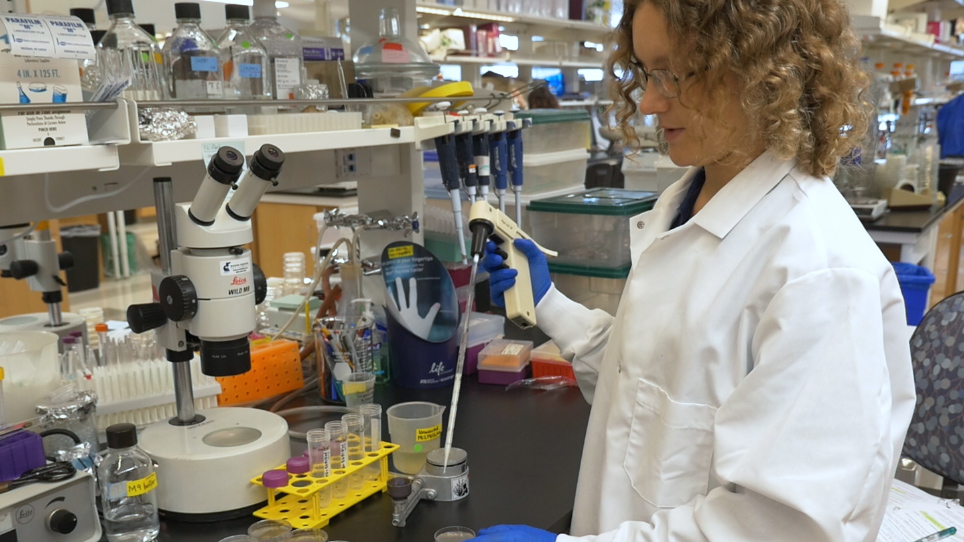/
/
The C. elegans Intestine As a Model for Intercellular Lumen Morphogenesis and In Vivo Polarized Membrane Biogenesis at the Single-cell Level: Labeling by Antibody Staining, RNAi Loss-of-function Analysis and Imaging
Un abonnement à JoVE est nécessaire pour voir ce contenu. Connectez-vous ou commencez votre essai gratuit.
Journal JoVE
Biologie du développement
The C. elegans Intestine As a Model for Intercellular Lumen Morphogenesis and In Vivo Polarized Membrane Biogenesis at the Single-cell Level: Labeling by Antibody Staining, RNAi Loss-of-function Analysis and Imaging
Chapitres
- 00:05Titre
- 01:24Introduction to the Accompanying Publication
- 02:47Nematode Fixation
- 04:19Nematode Antibody Staining
- 06:33Applying RNAi to Nematodes Using a Feeding Protocol
- 07:57Analyzing Phenotypes Using Fluorescence Dissecting Microscopy
- 08:41Analyzing Phenotypes Using Confocal Microscopy
- 10:14Results: Immunohistochemistry, RNAi and Microscopic Analysis of Intestinal Apical membrane and Lumen Morphogenesis
- 11:45Conclusion
The transparent C. elegans intestine can serve as an "in vivo tissue chamber" for studying apicobasal membrane and lumen biogenesis at the single-cell and subcellular level during multicellular tubulogenesis. This protocol describes how to combine standard labeling, loss-of-function genetic/RNAi and microscopic approaches to dissect these processes on a molecular level.
Tags
C. ElegansIntestineIntercellular LumenMembrane BiogenesisPolarized MembraneSingle-cell LevelAntibody StainingRNAiLoss-of-function AnalysisImagingMorphogenesisApical MembraneBasolateral MembranePolarityTubulogenesisExcretory CanalTransgenic AnimalsFluorescent Fusion ProteinsLive ImagingImmunohistochemistryMembrane MarkersPromoters










